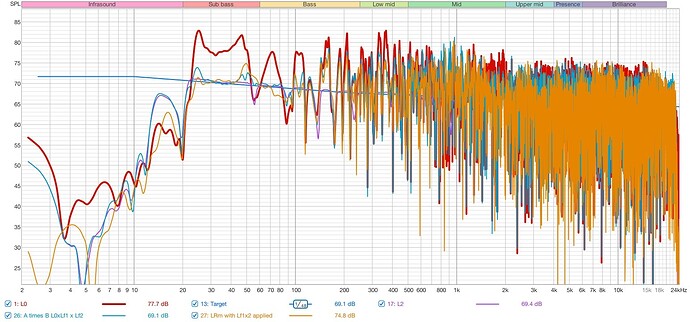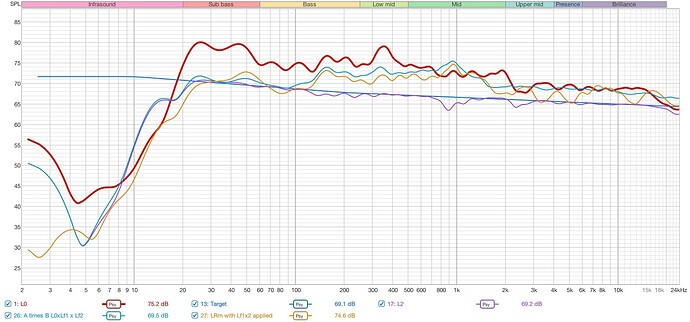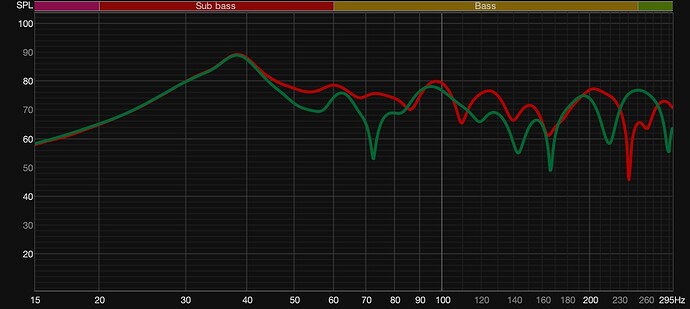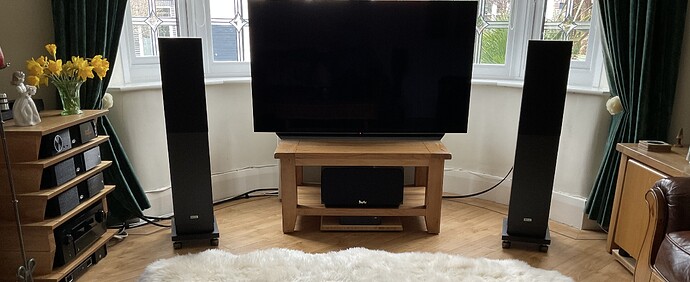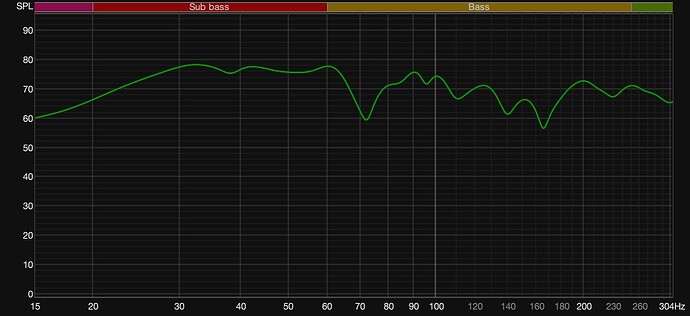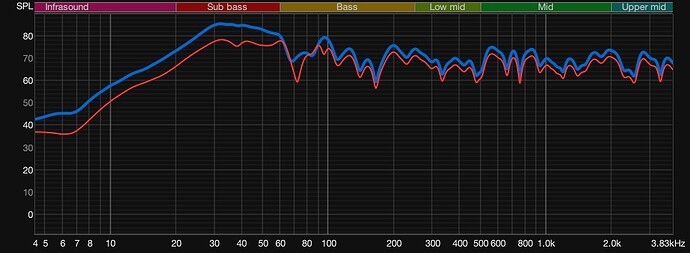Thanks a lot for your advice. I will have a look at the article.
Does this correction method work with open baffle, or even dipolar?
I’m thinking Spatial Audio X4s
Thanks
I didn’t try myself but I guess someone here with DIY speakers did with success. I don’t see any reason why they shouldn’t although optimizations might be needed for open baffle.
It’s funny how it takes a bit to get used to a certain sound. I’m not using the MORE BASS correction you sent, but I guess “normal” amount of BASS correction.
Without correction, I just had such a large amount of sloppy bass, and the correction cleaned it up so much that I felt like I was missing something…. Until I got used to it, and now you can tell that it’s the perfect amount.
I’ve been practising trying to be able to do everything myself. This process is something I want to make sure that years from now I can do if I upgrade my speakers. Definitely an essential thing.
Hi @nquery, can you please link to the change info you mention? I can’t see this in either the YouTube video description or the Notes and Updates doc in the zip file, so I’m not sure where to find this and any other updates to OCA’s process. Thanks!
Thanks so much for putting together all of these amazing processes and tutorials, @OCA! I’m new to REW but have been following Supreme Digital Room Correction through to the second filter so far. My motivation is to try to compensate for some dips around 55 and 90Hz as well as being excited by all the positive outcomes in this thread and on YT comments!
My speakers are Buchardt A500 which use DSP internally to produce a reasonably flat response so I presume my untreated nearly cubic(!) small room is the culprit. For the VBA filter, the Excel provides peaks and dips for my 3.6m length that don’t match my measurements so I’m not sure whether to use the (larger) first peaks and dips I observe or the (smaller) subsequent peaks and dips that are closest to the expected frequencies? The variance is quite substantial, e.g. first observed peaks are 25, 46, 71 vs 48, 95, 143 expected, and first dips are 55, 88 observed vs 71, 119 expected.
When listening with the VBA and inversion filters it sounds like the bass is overly reduced and “empty” compared to no filters so I’m wondering if these peak/dip discrepancies might be the cause? Like nquery found above I also had the issue where 1/A resulted in very low target levels around -55.5 dB, so it’s not possible to equalise them to 3 dB, but it sounds like so long as L and R have the same target level that’s not a big deal.
It might just be that the reduction in bass to the target just sounds low relative to the mids which haven’t been reduced by the filters? I’m not sure why but, whereas my L2 result aligns perfectly to the target across the frequency range, calculating (L0 * Lf1) * Lf2 and new measurements taken with both filters applied in Roon (-6 dB offset in images as it’s L+R) leaves mids above the target curve, much like L0.
Anyway thanks again and I appreciate any help you can offer – hopefully this wall of text helps out someone else too in the future!
I have optimized VBA method a little bit and maybe it can help with your case. Follow the method in the linked video and see if there’s any improvement:
As per the SPL offset of inversion, there’s some confusion as REW changed the default SPL offsets in vector divisions recently but the final results should end up at the same level.
I didn’t get great results and I haven’t played with this in the past few weeks but planning to give it another go soon.
I am considering using REW (or another tool) to help me build a simple convolution filter for +90 and -90 degree phase shift, as part of a project to build an all-Roon Hafler-style Matrix surround function within Roon’s DSP. Of course Roon provides 180 degree conversion already, but to be effective, matrix surround really needs +90 and -90 degree phase shifts. Do you have any idea whether this is possible?
Thanks, sorry I didn’t realise these were changes to REW itself and not OCA’s filter procedure.
Awesome, thanks @OCA, I’ll check this out this new VBA method shortly!
I am not familiar with the Hafler matrix process but almost any type of phase shift can be done in rePhase and exported as .wav convolution ready for Roon DSP engine. If you need help with rePhase, let me know.
Thanks - I will experiment with RePhase. Initial look at the website seems promising.
rePhase is golden.
Hi OCA,
Thanks for sharing your expertise and the latest VBA methodology - much appreciated.
My frequency response is very different than yours but also does not seem to conform to the expected peaks and dips in spreadsheet.
L & R responses below:
Front wall is a bay window and left hand side there is a chimney breast. I put longest measurements into spreadsheet (L 4.5m, W 3.5m and H 2.5m) but suspect this is skewing results.
I’ve tried the new VBA methodology but can’t seem better the existing filter you very kindly put together.
If there is anything you can suggest please let me know.
Many thanks,
The speaker with the red response doesn’t seem to have any first dips, is it very close to wall or something? The method assumes speakers are at least same distance from rear and side walls.
Sometimes a picture helps. There are 4 passive bass tri-traps in corners behind curtains and a 2 bass traps behind the TV in bay window area. Measurements were taken with curtains closed but even though they are lined crushed velvet I do not think they would have any impact on bass frequency response.
Thanks for taking the time. KRs,
Red is left green is right.
Hi OCA,
I’ve been tinkering the last 24 hours.
The existing VBA filter produces the frequency response below which deals with 38hz peak very well but creates a dip around 72hz.
My thinking was to try a shorter steeper LPF (57.3, B’worth and 48 db/oct, inverted and time offset) cutting off before the 72hz dip.
My results were poor in comparison Dirac + LPF filter was not aligned to 38hz peak and the correction was too weak.
Given your expert eye do you think it possible to reduce 72hz dip whilst continuing to reduce the 38hz peak.
The latter has the most impact on music so if I can only treat one it would be the 38hz spike.
Many thanks,
Hi OCA,
More tinkering with the new VBA filter.
I’m without my system currently so have been unable to do a proper listening test yet but hopefully next week at latest - I’ll report back when I do.
On average more than 6dB in sub bass than previous filter - maybe too much we’ll see!
I used 48dB/oct roll off at 57hz and then trial and errored the time delay.
Included a graph below comparing the frequency response with new (blue) and existing (red) VBA filters.
Thanks as ever for sharing your knowledge and the time it takes you - very much appreciated.
A 48dB/oct lpf @ 57Hz will cause 16.4ms delay on its own (if created in REW). If you deduct that from your calculated IR peak time, the filter should be well aligned for your resonant frequency. Your bass traps are very effective but they seem to effect left and right speakers quite a bit differently which makes designing the VBA harder. Also keep in mind that two VBA filters for the left and right speakers should not have very different IR peak times as that will cause group delay differences.
Btw, if you need to cut them off fast, you can create much steeper then 48dB/oct lpf rolloffs in rePhase.
Hi OCA,
Yes REW confirmed 16.4ms delay so a net shift of -9.6575ms but to line up correction dip with frequency peak I needed to extend net shift to -10.8ms (overall 27.2ms).
The IR peak delay is the same for both L&R speakers as the frequency response for both is similar at first peak which is what I was primarily trying to treat and then attempt to cut off before the righthand speakers’ 72hz dip.
The difference in frequency response from each speaker is a bit weird as I have applied room treatment symmetrically but my room unfortunately is not so can only assume it is down to this.
Thanks for tip about rePhase but is not available for Mac users and as always I couldn’t have managed any of this without your guidance.
Quick question - is there such a thing as an acceptable bass decay time and if so what is it?
KRs,
